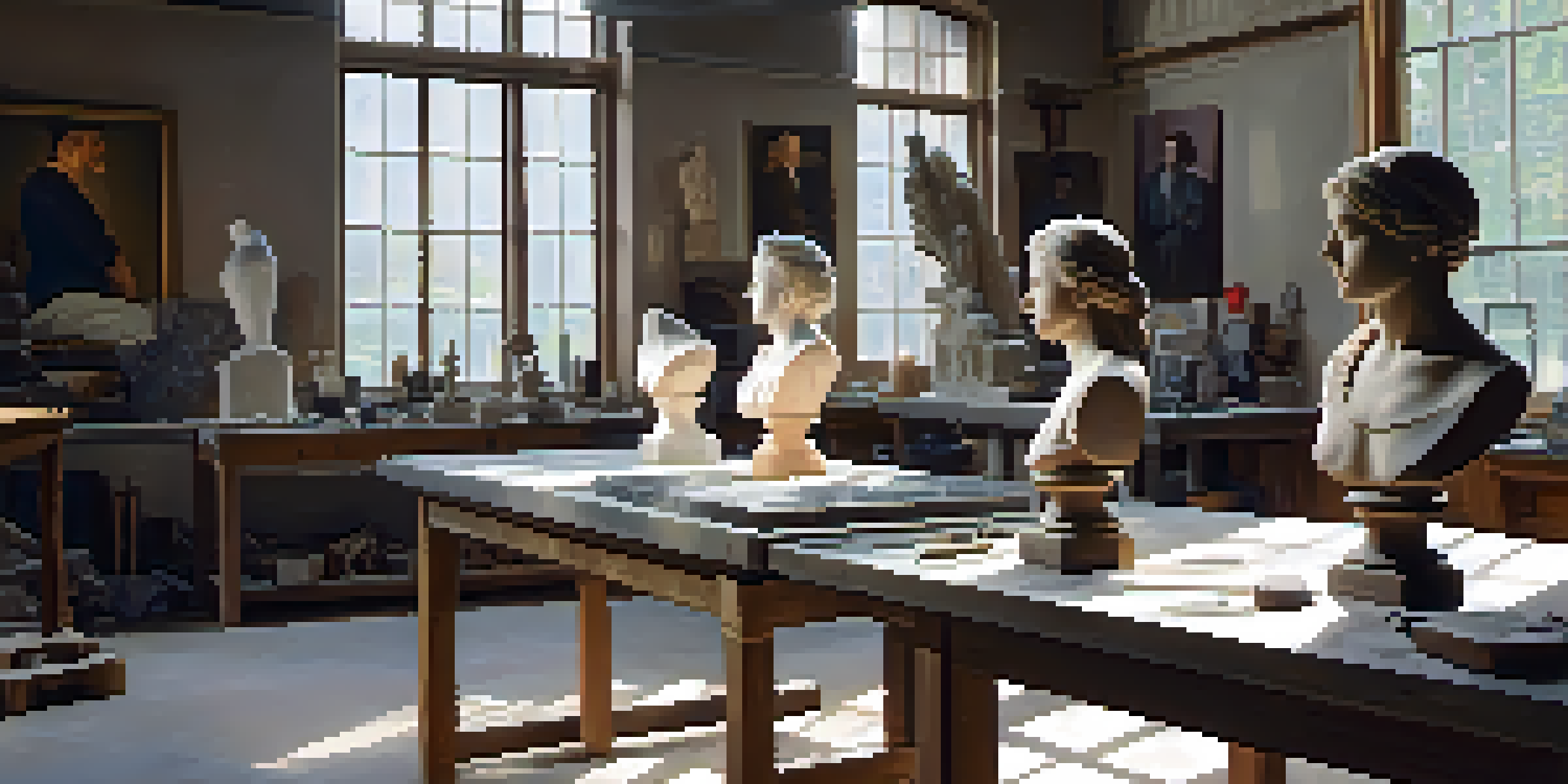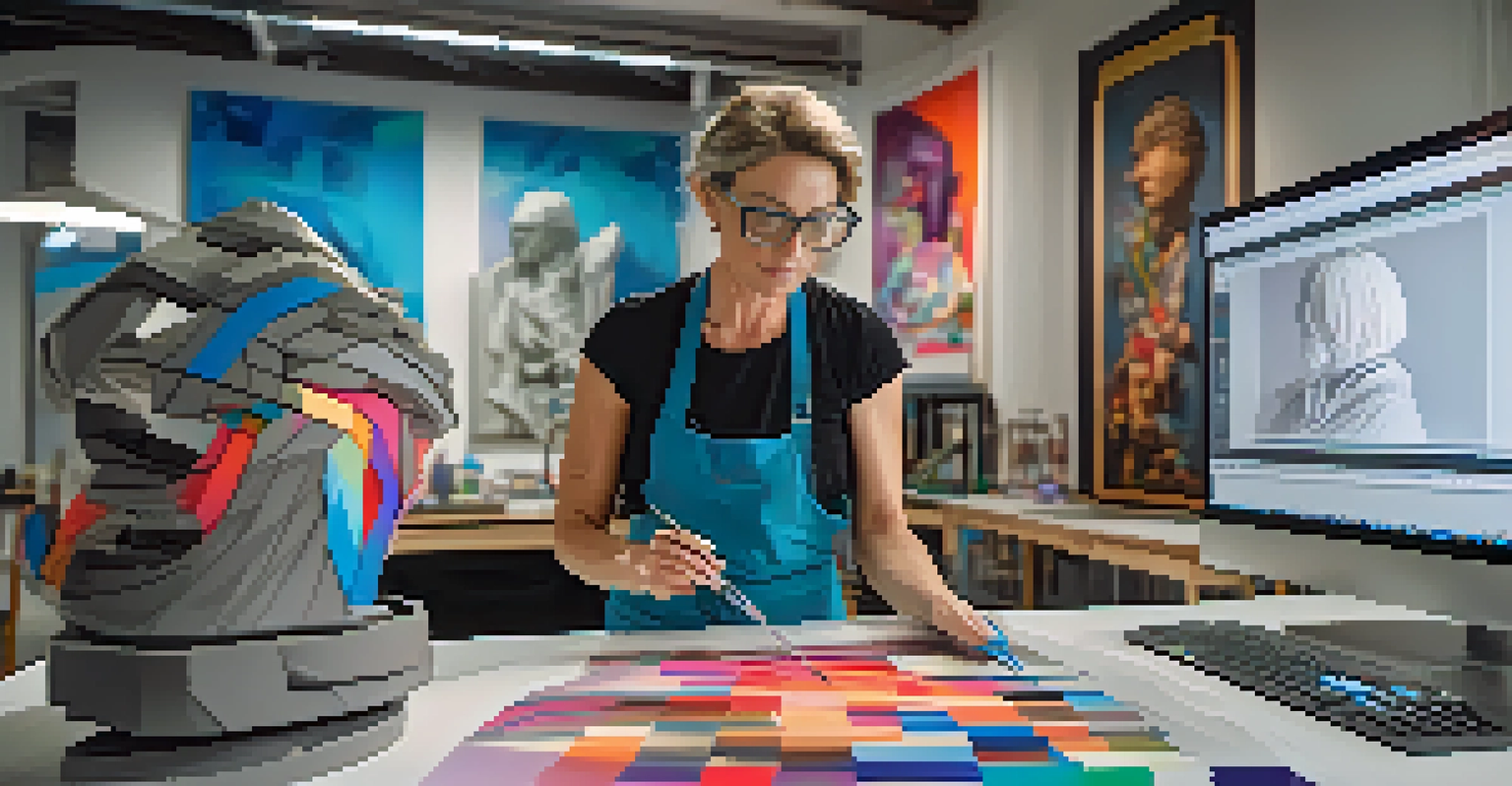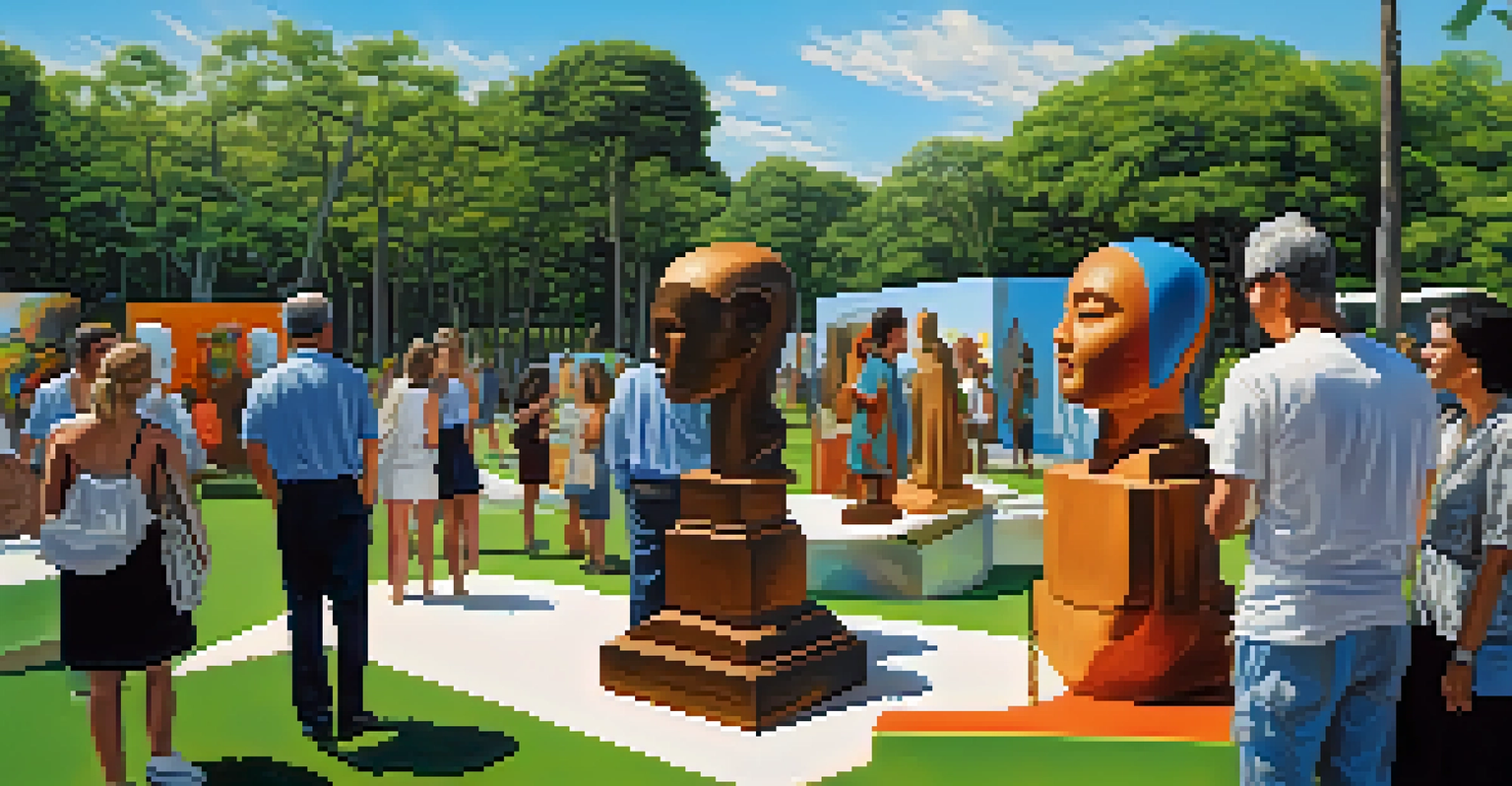The Art of Sculpting: Traditional Methods and Modern Innovations

Understanding the Foundations of Traditional Sculpting
Traditional sculpting has deep roots, tracing back to ancient civilizations. Artists would use materials like stone, wood, and clay to create lifelike forms that often depicted their culture or beliefs. This hands-on approach involved meticulous techniques passed down through generations, showcasing the sculptor's skill and patience.
Sculpture is the art of the intelligence.
Methods such as carving, modeling, and casting define traditional sculpting. Carving, for instance, requires chipping away material to reveal the desired shape, a practice that demands both precision and creativity. Modeling, on the other hand, allows for more flexibility, letting artists manipulate soft materials into intricate designs.
Related Resource
These time-honored techniques not only highlight the artist’s craftsmanship but also connect us to history. Each piece tells a story, reflecting the values and aesthetics of its time, making traditional sculpting an essential part of cultural heritage.
The Role of Tools in Traditional Sculpting Techniques
Tools play a crucial role in traditional sculpting, influencing both the process and the final outcome. From chisels and mallets to wooden modeling tools, each instrument serves a specific purpose, enhancing the artist’s ability to shape their vision. The choice of tool often reflects the material being used and the desired detail in the sculpture.

For example, a sculptor might use a pointed chisel for delicate features, while broader tools are reserved for rough shaping. This variety allows for a dynamic range of textures and finishes, showcasing the artist's mastery over their craft. The tactile relationship between artist and tool is central to the sculpting experience.
Traditional Techniques Endure
Traditional sculpting methods like carving, modeling, and casting continue to connect artists with their cultural heritage.
Moreover, these tools have evolved over time, with artisans often customizing them to suit their unique style. The blend of tradition and personal innovation demonstrates how sculptors embrace their heritage while adapting to their artistic needs.
Modern Innovations Transforming the Sculpting Landscape
In recent years, modern innovations have significantly transformed the art of sculpting. Artists now have access to advanced technologies such as 3D printing and digital modeling, allowing for unprecedented precision and creativity. These tools not only streamline the sculpting process but also open up new avenues for artistic expression.
The sculptor should be a master of his tools, for they are his instruments in creating beauty.
For instance, a sculptor can create intricate designs on a computer and then use a 3D printer to bring their vision to life. This fusion of technology and art enables the creation of complex structures that would be incredibly time-consuming with traditional methods. Plus, it allows for experimentation with materials that were previously difficult to manipulate.
Related Resource
However, this shift doesn’t mean abandoning traditional techniques. Many contemporary artists blend both worlds, incorporating classical methods with modern technologies to push the boundaries of their work. This harmonious balance enriches the sculpting landscape, inviting audiences to appreciate the evolution of the art form.
Materials in Sculpting: From Stone to Synthetic Options
The choice of materials in sculpting significantly impacts the final piece. Traditional sculptors often worked with stone, wood, and clay, each offering unique qualities that influence texture and durability. Stone, for example, is revered for its permanence, while clay allows for more fluidity and expression in form.
In contrast, modern sculptors are experimenting with synthetic materials like fiberglass and resin. These materials offer versatility and can mimic the appearance of traditional mediums while being lighter and easier to work with. This innovation encourages artists to think outside the box, expanding the possibilities of what can be sculpted.
Modern Tools Enhance Creativity
The integration of advanced technologies such as 3D printing is revolutionizing sculpting, allowing for greater precision and expression.
Ultimately, the material chosen reflects the artist's intent and vision, bridging the gap between past and present. Whether using centuries-old stone or cutting-edge resin, the sculptor’s choice plays a pivotal role in the storytelling aspect of the artwork.
The Influence of Cultural Context on Sculpting Styles
Cultural context significantly shapes sculpting styles, with different regions developing unique practices. For example, African sculptures often emphasize abstract forms and symbolism, while classical European works focus on realism and proportion. These distinctions highlight how culture influences artistic expression and shared values.
As globalization continues to blur these boundaries, contemporary sculptors find inspiration in diverse traditions. This cross-pollination leads to innovative styles that honor historical roots while embracing modern perspectives. Sculptors today might incorporate elements from various cultures, creating pieces that resonate on multiple levels.
Related Resource
The dialogue between tradition and modernity enriches the sculpting community, fostering a sense of shared creativity. By acknowledging and celebrating cultural influences, artists create works that reflect a more interconnected world, inviting viewers to engage with the art on a deeper level.
The Emotional Connection Between Sculptors and Their Work
The relationship between sculptors and their creations often transcends mere craftsmanship, delving into emotional territory. Many artists pour their experiences, thoughts, and feelings into their work, making sculptures not just objects but powerful expressions of identity. This emotional connection can be palpable for viewers as they engage with the piece.
For instance, a sculptor might channel personal narratives into the form and texture of their work, allowing audiences to glimpse the artist’s journey. This intimacy fosters a connection that can evoke empathy and understanding, bridging the gap between creator and observer. The act of sculpting can be both therapeutic and revealing for the artist.
Cultural Context Shapes Styles
Sculpting styles are heavily influenced by cultural context, leading to diverse practices and innovative blends of tradition and modernity.
In a world filled with fleeting digital images, physical sculptures offer a tangible reminder of the human experience. The emotional depth found in sculpting adds another layer of appreciation, inviting viewers to connect with the art on a personal level.
The Future of Sculpting: Trends to Watch
As we look ahead, the future of sculpting is poised for exciting developments. With the rise of virtual and augmented reality, artists are experimenting with immersive installations that challenge traditional viewing experiences. This innovative approach invites audiences to engage with sculptures in dynamic ways, often blurring the lines between the physical and digital realms.
Additionally, sustainability is becoming increasingly important in the art world, with many sculptors seeking eco-friendly materials and practices. Artists are finding creative solutions that reduce waste and promote environmental responsibility, merging artistry with activism. This trend reflects a broader societal shift towards sustainability across various industries.

Ultimately, the future of sculpting holds promise for both artists and audiences. By embracing new technologies and sustainable practices, sculptors can continue to innovate while honoring their rich heritage, ensuring that this timeless art form remains vibrant and relevant in our ever-changing world.